ENERGY Minister Tina Joemat-Pettersson said on Wednesday SA had to go “nuclear” because renewable energy could not supply the base load the country would need in the future.
Speaking on the second day of the state of the nation (Sona) debate, Ms Joemat-Pettersson said the country lacked adequate water to support coal-fired power generation.
Nuclear power plants such as Koeberg in the Western Cape used seawater while coal-fired plants such as Medupi used fresh water. “Renewables won’t supply enough base load” and “we will continue building on the success of Koeberg”, she said.
Ms Joemat-Pettersson said since 2011 there had been a new sense of urgency in investment in renewable energy, with R100bn in investment in the Western Cape alone.
At Sona last week, President Jacob Zuma said the plan was to “introduce 9,600MW of nuclear energy in the next decade”.
However, he said SA would “test the market to ascertain the true cost of building modern nuclear plants” and “will only procure nuclear on a scale and pace that our country can afford”.
Ms Joemat-Pettersson said the largest solar farm in Africa would be opened at De Aar in the Northern Cape early next month, and two weeks later another farm generating 125MW, with an investment of R5bn, would be opened in the same province.
Peter Marais, research associate in the energy and environment team at Frost & Sullivan Africa, said Mr Zuma’s speech had given little indication of how the government plans to afford 9,600MW of new nuclear power capacity in the next decade.
“He hinted that nuclear would only be rolled out on a scale and pace that SA can afford, but who determines that affordability?
“Nuclear is an expensive energy resource compared to coal, of which SA has an abundance, and even solar photovoltaics and onshore wind are cheaper per kWh than nuclear at current market prices. Internationally, nuclear build programmes cost as much as $7,000 per kW which, considering our current exchange rate environment, is extremely costly,” Mr Marais said.
He added that there was “no doubt that SA needs a diversified energy mix and needs to look beyond coal to satisfy its signature of the Kyoto Protocol, but what should that energy mix look like?”
Mr Marais also said the Integrated Resource Plan held various assumptions, such as 6% annual economic growth, and viewed megaprojects such as the Kusile and Medupi coal-fired power stations coming online in time and on budget.
“Nuclear is a feasible energy source in terms of resource availability and SA has a 5.5% share of global proven uranium sources according to the most recent update,” he said. “However, nuclear power generation has declined from a peak of 17.8% of global commercial electricity generation in 1996 to just above 10% in 2014, according to the World Nuclear Report 2015. So why is a SA so focused on it as a major source of power generation?
“The answer isn’t clear from government, and over the festive season break, a Government Gazette stated that the process for procurement of nuclear power has begun with countries such as China, Russia, France, South Korea, Japan and Canada all vying for the lucrative contract. That leaves critics to speculate what the driving forces for nuclear are in SA,” Mr Marais said.
He added that the Renewable Energy Independent Power Producer Programme had been a shining light for the South African economy and had racked up more than R194bn in investment to date and had procured more than 6,000MW of clean, carbon-free energy, of which 1,500MW is operational.
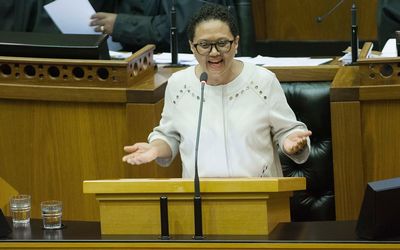
Tina Joemat-Pettersson. Picture: TREVOR SAMSON
ENERGY Minister Tina Joemat-Pettersson said on Wednesday SA had to go “nuclear” because renewable energy could not supply the base load the country would need in the future.
Speaking on the second day of the state of the nation (Sona) debate, Ms Joemat-Pettersson said the country lacked adequate water to support coal-fired power generation.
Nuclear power plants such as Koeberg in the Western Cape used seawater while coal-fired plants such as Medupi used fresh water. “Renewables won’t supply enough base load” and “we will continue building on the success of Koeberg”, she said.
Ms Joemat-Pettersson said since 2011 there had been a new sense of urgency in investment in renewable energy, with R100bn in investment in the Western Cape alone.
At Sona last week, President Jacob Zuma said the plan was to “introduce 9,600MW of nuclear energy in the next decade”.
However, he said SA would “test the market to ascertain the true cost of building modern nuclear plants” and “will only procure nuclear on a scale and pace that our country can afford”.
Ms Joemat-Pettersson said the largest solar farm in Africa would be opened at De Aar in the Northern Cape early next month, and two weeks later another farm generating 125MW, with an investment of R5bn, would be opened in the same province.
Peter Marais, research associate in the energy and environment team at Frost & Sullivan Africa, said Mr Zuma’s speech had given little indication of how the government plans to afford 9,600MW of new nuclear power capacity in the next decade.
“He hinted that nuclear would only be rolled out on a scale and pace that SA can afford, but who determines that affordability?
“Nuclear is an expensive energy resource compared to coal, of which SA has an abundance, and even solar photovoltaics and onshore wind are cheaper per kWh than nuclear at current market prices. Internationally, nuclear build programmes cost as much as $7,000 per kW which, considering our current exchange rate environment, is extremely costly,” Mr Marais said.
He added that there was “no doubt that SA needs a diversified energy mix and needs to look beyond coal to satisfy its signature of the Kyoto Protocol, but what should that energy mix look like?”
Mr Marais also said the Integrated Resource Plan held various assumptions, such as 6% annual economic growth, and viewed megaprojects such as the Kusile and Medupi coal-fired power stations coming online in time and on budget.
“Nuclear is a feasible energy source in terms of resource availability and SA has a 5.5% share of global proven uranium sources according to the most recent update,” he said. “However, nuclear power generation has declined from a peak of 17.8% of global commercial electricity generation in 1996 to just above 10% in 2014, according to the World Nuclear Report 2015. So why is a SA so focused on it as a major source of power generation?
“The answer isn’t clear from government, and over the festive season break, a Government Gazette stated that the process for procurement of nuclear power has begun with countries such as China, Russia, France, South Korea, Japan and Canada all vying for the lucrative contract. That leaves critics to speculate what the driving forces for nuclear are in SA,” Mr Marais said.
He added that the Renewable Energy Independent Power Producer Programme had been a shining light for the South African economy and had racked up more than R194bn in investment to date and had procured more than 6,000MW of clean, carbon-free energy, of which 1,500MW is operational.


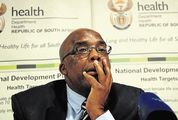
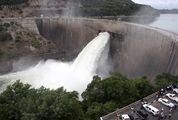
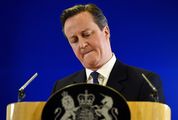
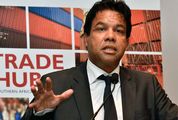


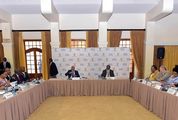
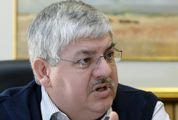
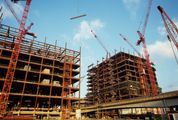
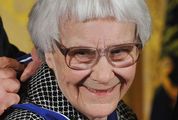









Change: -1.84%
Change: -2.22%
Change: -3.22%
Change: -2.18%
Change: -0.22%
Data supplied by Profile Data
Change: -0.36%
Change: -0.13%
Change: -1.84%
Change: 0.00%
Change: 0.00%
Data supplied by Profile Data
Change: -0.11%
Change: 0.08%
Change: 0.13%
Change: 0.44%
Change: -0.11%
Data supplied by Profile Data
Change: -0.02%
Change: -0.11%
Change: -0.39%
Change: -0.80%
Change: -2.32%
Data supplied by Profile Data